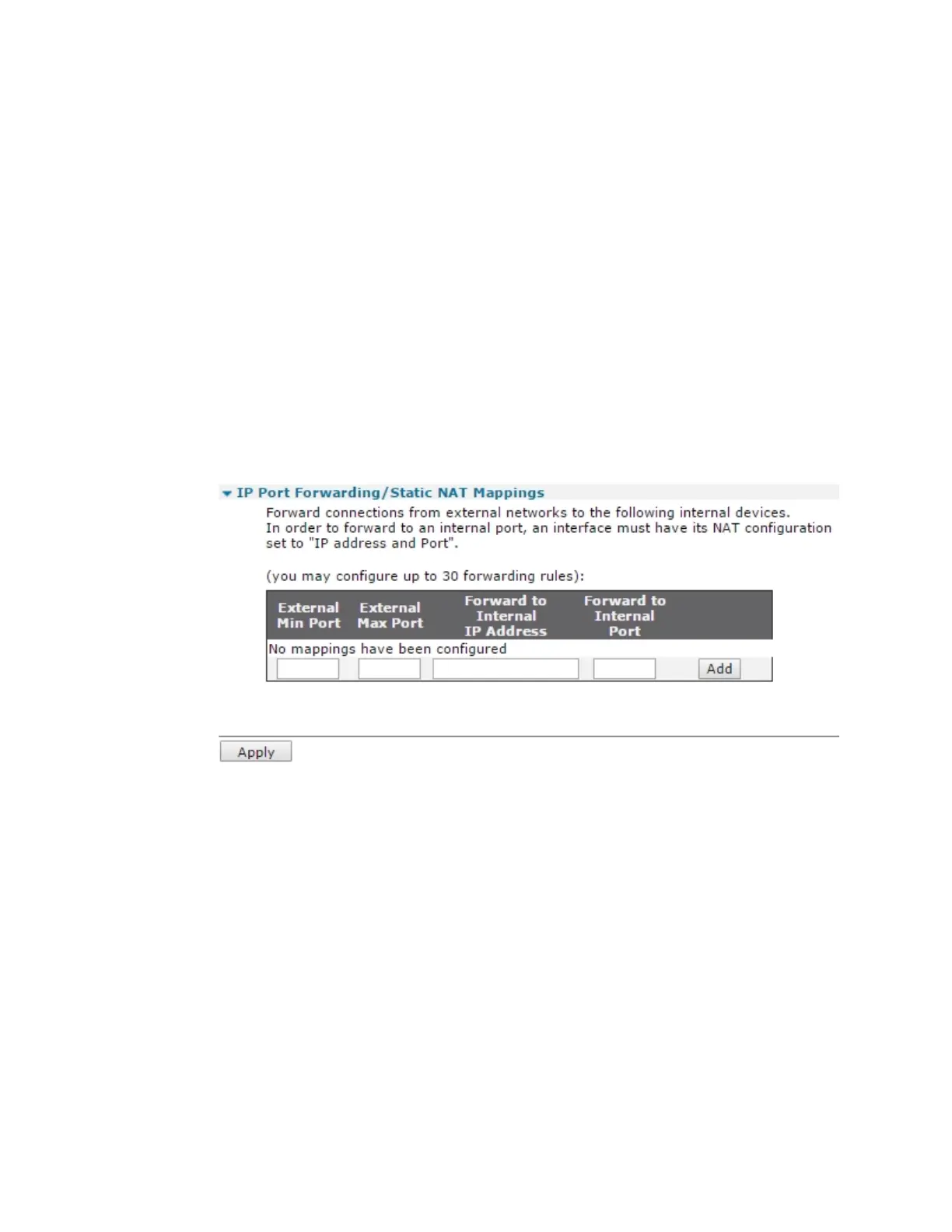Configuring IP routing and forwarding Configure IP port forwarding and static NAT mappings
Digi TransPort® Routers User Guide
458
Configure IP port forwarding and static NAT mappings
The router supports Network Address Translation (NAT) and Network Address and Port Translation
(NAPT). NAT or NAPT may be enabled on a particular interface such as a PPP instance. When operating
with NAT enabled, this interface has a single externally visible IP address. When sending IP packets,
the local IP addresses (for example on a local area network) are replaced by the single IP address of
the interface. The router keeps track of the local IP addresses and port numbers so that if a matching
reply packet is received, it is directed to the correct local IP address. With only one externally visible IP
address, NAT effectively prevents external computers from addressing specific local hosts, thus
providing a very basic level of “firewall” security.
Static NAT mappings allow received packets destined for particular ports to be directed to specific
local IP addresses. For example, to have a server, running on a local network, externally accessible, a
static NAT mapping would be set up using the local IP address of the server and the port number for
accessing the required service.
É
Web
1. Go to Configuration > Network > IP Routing/Forwarding > IP Port Forwarding/Static
NATMappings.
2. Enter the following configuration values into the table
External Min Port
The lowest port number to be redirected.
External Max Port
The highest port number to be redirected.
Forward to Internal IP Address a.b.c.d
The IP address to which packets containing the specified destination port number are to be
redirected.

